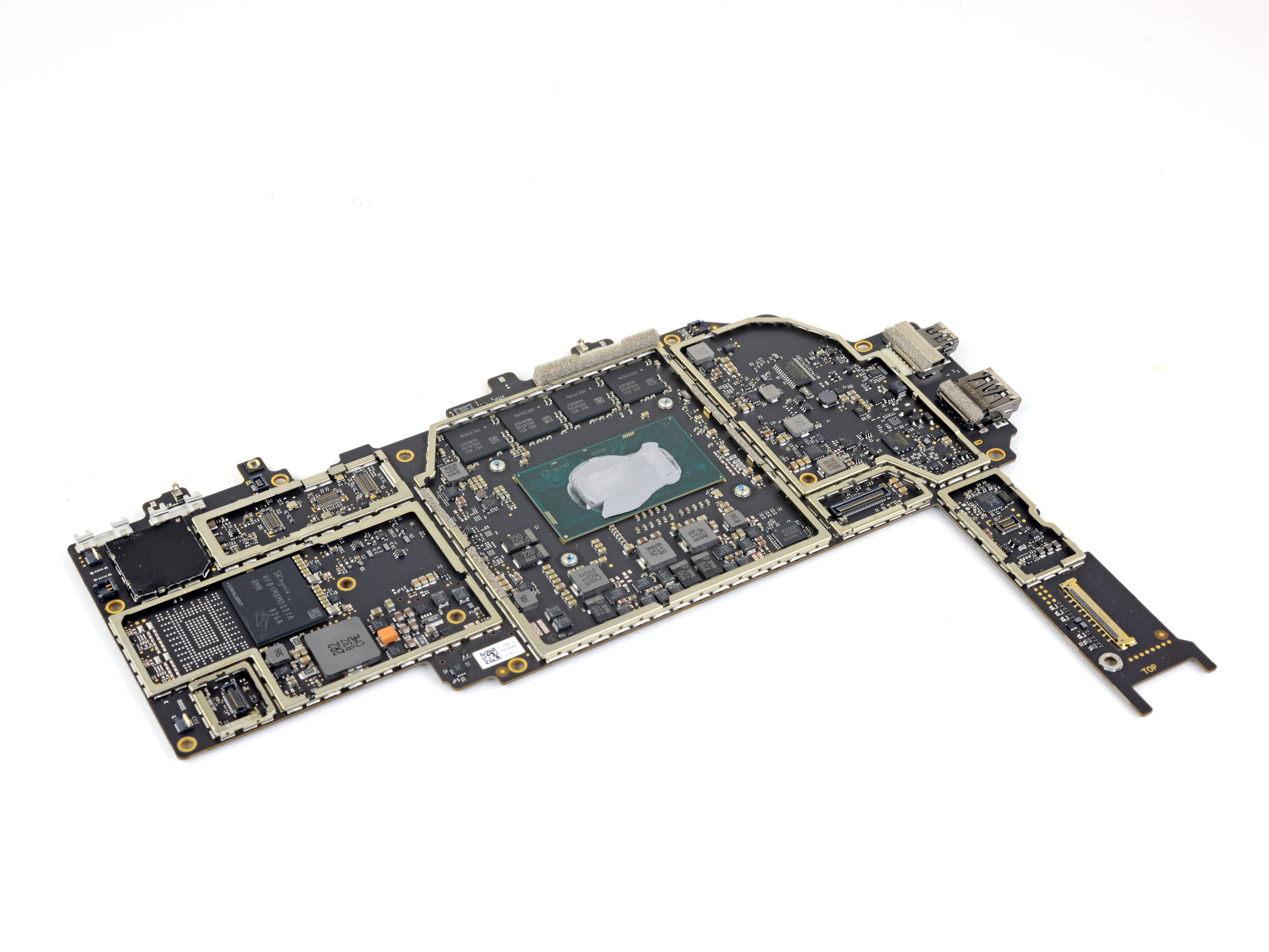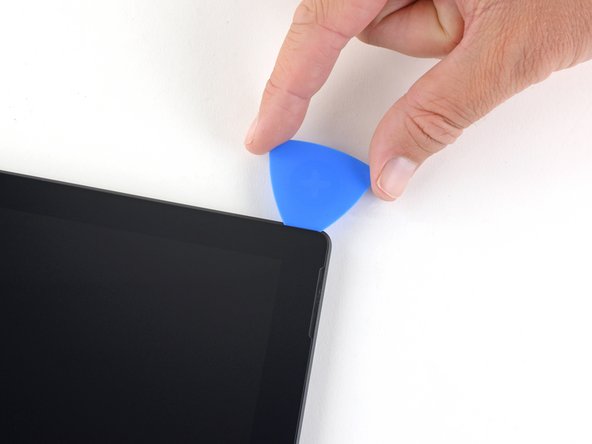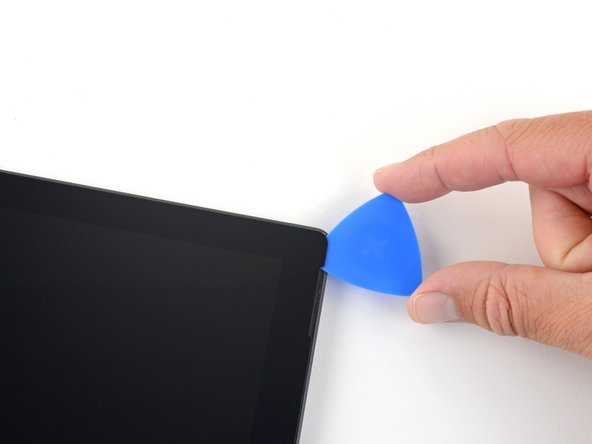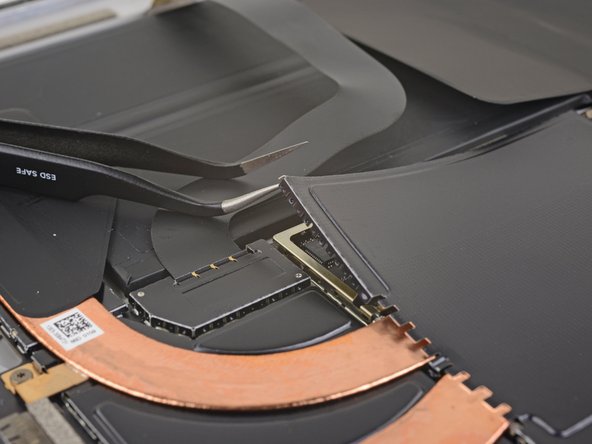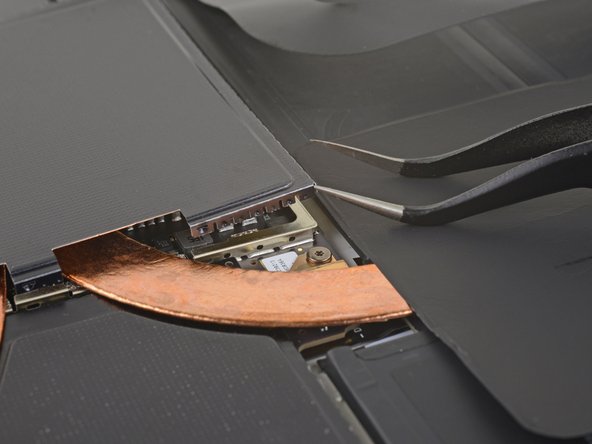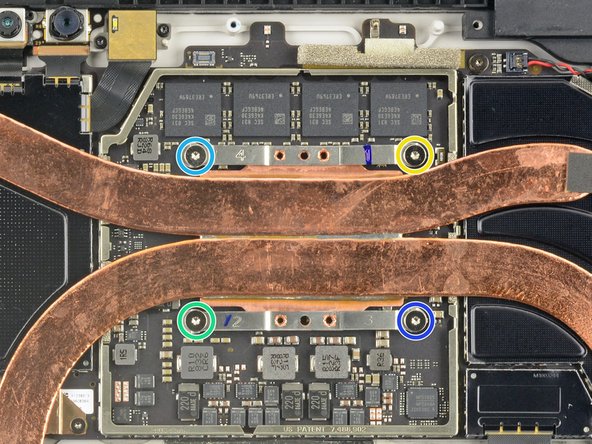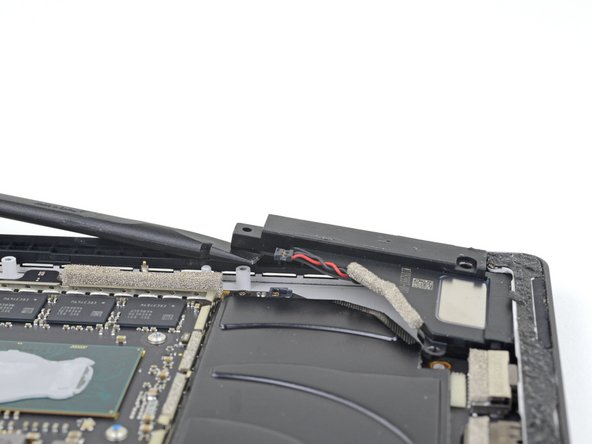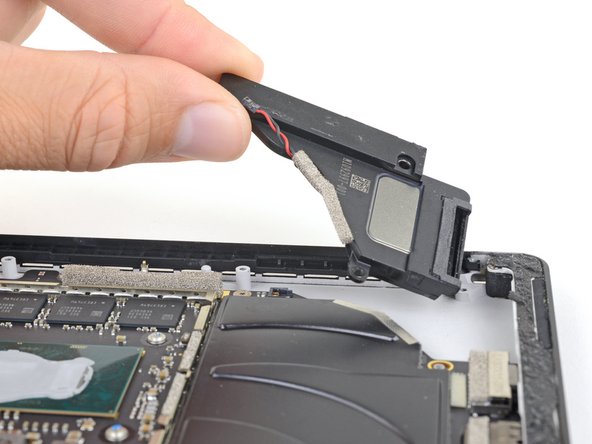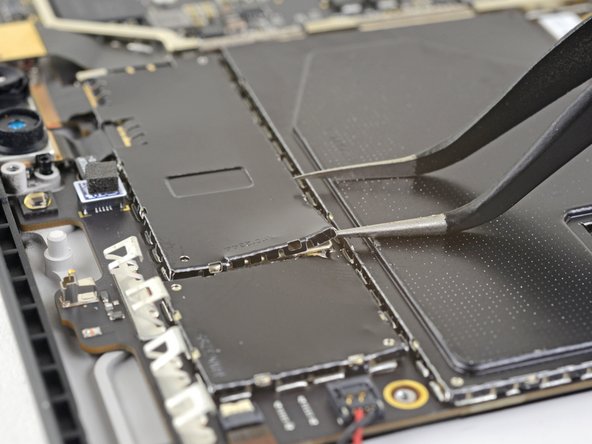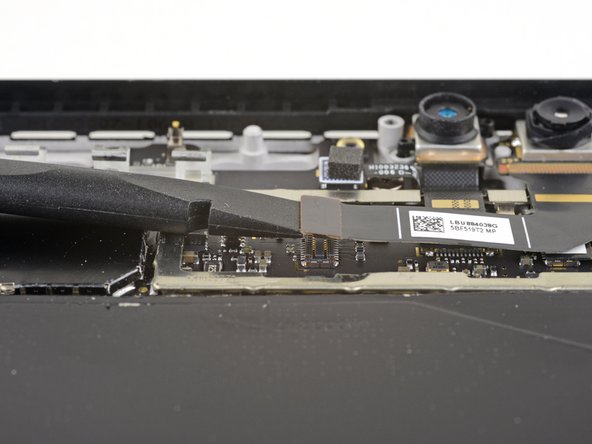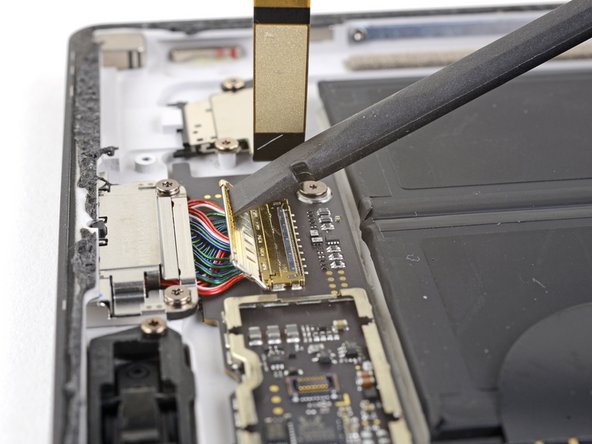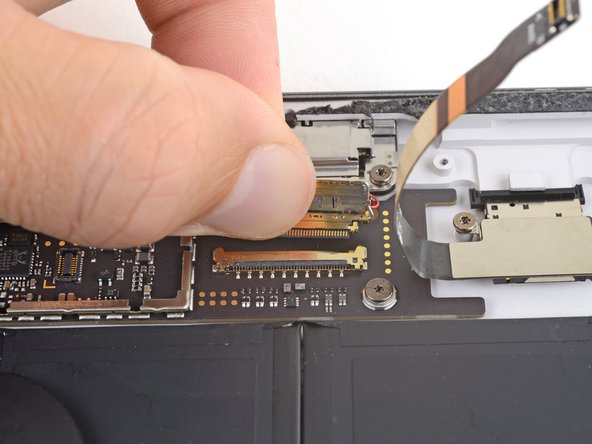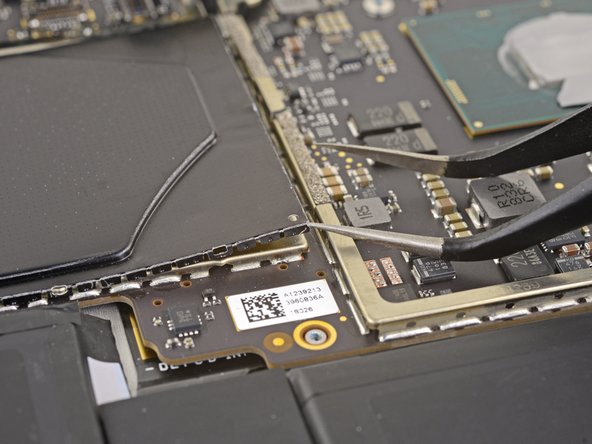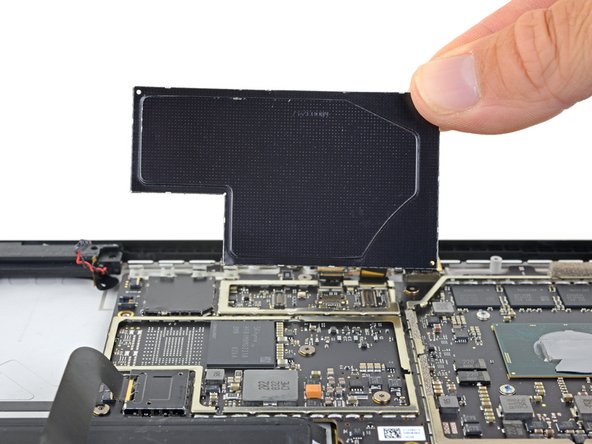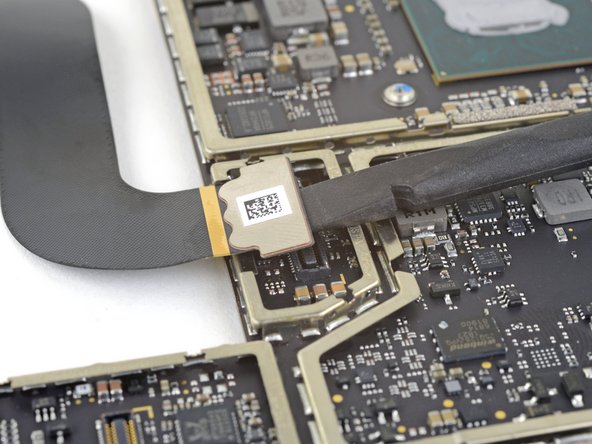Microsoft Surface Pro 6 Motherboard Replacement
Duration: 45 minutes
Steps: 54 Steps
Heads up! The display panel here is a bit fragile, so there's a good chance it could crack if you're not careful. Proceed with caution, and if you're unsure, remember you can always schedule a repair for some expert help.
Ready to replace the motherboard in your Microsoft Surface Pro 6? Here’s a guide to help you out! One little tip: adding fresh thermal paste to the CPU when putting everything back together could give your Surface a nice performance boost. Make sure to grab some fresh thermal paste and high-concentration isopropyl alcohol or a thermal paste cleaner for the job. Heads up—there's a good chance the display panel might be a little fragile, so be super careful when prying it off, and don't forget to apply plenty of heat to make things easier. If you need a hand with any of these tricky steps, you can always schedule a repair.
Step 1
Make sure to completely power off your Surface before starting to take it apart.
For extra heat, you can use a hair dryer, heat gun, or hot plate—just be careful not to overcook it! The screen and battery don’t like too much heat.
You might need to warm up and reapply the iOpener a couple of times to get your Surface nice and toasty. Just be sure to follow the iOpener’s instructions so you don’t accidentally overdo it!
- If the screen glass is cracked, keep things safe and avoid making the mess worse by covering the glass with strips of clear packing tape. Overlap the tape until the entire screen is protected. Don’t forget to wear safety glasses to keep your eyes safe while working.
- Warm up an iOpener and place it on the right edge of the Surface’s screen for two minutes to loosen the adhesive.
Tools Used
Step 2
- Before diving in, take a quick peek at the screen adhesive layout—this will save you some heartache later!
- The areas with only adhesive? Totally safe to cut. No worries there!
- The display board and those sneaky flex cables are hanging out near the edges. Slice carefully here and keep the pick shallow to avoid any accidents.
- Watch out for those fragile antenna cables hiding just below this part of the screen. Stay sharp, and be gentle! Also, this spot has the thickest adhesive, so take it slow and steady.
Step 3
Keep the opening pick shallow—don’t push it past the black bezel along the screen’s edge. Going too deep might mess up the LCD, and we want to keep things smooth!
- Gently slide an opening pick into the speaker hole on the screen and carefully work it underneath the glass. Be sure to avoid pressing the pick into the speaker grille, as it’s delicate and can tear easily.
Step 4
- Tilt the pick towards the bottom of the Surface and slide it gently underneath the lower edge of the speaker cutout. You've got this!
Step 5
If you feel the pick hitting a stubborn spot while sliding it around, pause and warm up that area again. Pushing too hard might crack the glass—let’s keep it safe and smooth!
- Gently slide the pick down along the right edge of your Surface to carefully cut through the adhesive holding the screen in place.
- Keep that pick wedged in the right edge to stop the adhesive from snapping back together.
Step 6
You can also use a hair dryer, heat gun, or hot plate to add some extra heat, but take it easy—overheating the Surface could damage the screen or battery, and nobody wants that!
You might have to heat up and apply the iOpener a few times to get your Surface nice and toasty. Just follow the iOpener instructions carefully so you don’t accidentally overcook it!
- Warm up the iOpener again and place it on the bottom edge of your Surface’s screen. Let it soak in the heat for two minutes to loosen things up.
Tools Used
Step 7
Be careful not to push the opening pick any further than the black bezel on the side of the screen. Going too deep could hurt the LCD, and we definitely don’t want that!
- Place a new opening pick into the bottom right corner, then gently slide it around the corner and toward the bottom edge.
- Work the pick along the bottom edge to slice through that sticky screen adhesive.
- Leave the pick in place along the bottom edge to keep the adhesive from sealing back up.
Step 8
You can use a hair dryer, heat gun, or hot plate to warm things up a bit more, but take it easy—too much heat can stress out your Surface, especially the screen and battery.
Reheat and reapply the iOpener a few times to get the Surface nice and toasty. Just be sure to follow the iOpener instructions to avoid any overheating mishaps.
- Warm up the iOpener again and stick it on the left edge of the Surface's screen for a solid two minutes to get things nice and toasty.
Tools Used
Step 9
Be super careful when working along the left edge for the first 2.5 inches (65 mm). Don’t push the opening pick more than 1/8 inch (3 mm) here – there's a display cable hiding in this area, and it’s pretty delicate. Once you’ve passed the cable zone, you’re in the clear! Just don’t go past the bezel with that pick.
- Place your opening pick into the bottom left corner and gently slide it around the corner, moving toward the left edge.
- Now, slide that pick along the left edge of your device to slice through the screen adhesive like a pro.
- Leave the pick in place along the left edge so the adhesive doesn’t sneak back together on you.
Step 10
You can use a hair dryer, heat gun, or hot plate to crank up the heat, but take it easy! The Surface’s screen and battery aren’t fans of overheating, so keep things warm, not toasty.
The adhesive is thickest along this edge, so you might need to warm up the Surface a few times with the iOpener to get it nice and soft. Just follow the iOpener instructions carefully to avoid overheating and keep things safe.
- Warm up the iOpener again and place it on the top edge of the Surface's screen for a solid two minutes to get things nice and toasty.
Tools Used
Step 11
Alright, let's talk about the top edge of the case. The next 6 inches (15 cm) are wrapped up by the left and right antennas, tucked neatly between the case and the screen bezel. Be sure to handle this part carefully — we don’t want any antenna damage. Just follow the steps closely and you're good to go!
- Gently curve the opening pick around the left corner and glide it along the top edge of the Surface. Pause when you reach about 2.75 inches (70 mm) from the left side.
Step 12
Keep the pick flat and parallel to the screen the entire time so it slides smoothly without snagging on the antennas. Avoid pushing the pick hard against the case.
- Start by gently sliding the point of your pick under the display where you left off. Just a heads up—don’t push the pick in deeper than the edge of the bezel.
- Now, carefully roll the pick to the right. Press that long edge into the screen adhesive below the bezel and keep cutting through it as you go. Just be careful not to slide the pick along the edge of the Surface.
- Repeat this process: insert the pick where you last cut and roll to the right along the top edge of the Surface. Keep going until you're about 2.5 inches (64 mm) away from the right edge. You got this!
Step 13
- After slicing through the adhesive covering the antennas about 8.5 inches (22 cm) from the left edge, smoothly glide your pick along the top edge, rounding the top right corner to cut through any stubborn adhesive left behind.
Step 14
Hold up, don’t rush! The screen is still tethered to the motherboard by two cables. Let’s keep them connected for now.
- Gently lift the screen assembly away from the Surface case, but go slow and steady. If you feel any resistance, pause and double-check that all the adhesive has been fully separated.
- Grab an opening pick and use it to slice through any remaining adhesive that’s still holding things together.
- Watch out for the flash lens – it might slip out of the Surface case. Keep it safe, and make sure to place it back in its spot during reassembly.
Step 15
- Gently lift the top of the screen assembly away from the case while carefully guiding the bottom of the screen closer to the motherboard connectors. Take it slow, we’ve got this!
- Now, carefully lay the screen back on the case with the connectors facing up. Make sure not to kink the display cables—they’re more fragile than they look!
Step 16
Be gentle with the shield—it's not just a piece of plastic, you'll need it back in place later during reassembly!
- Grab an opening pick and gently lift one edge of the EMI shield that’s guarding the display board.
- Keep working your way around the shield, prying at different spots until it pops free.
Step 17
- Carefully detach the EMI shield from the display board and set it aside.
Step 18
- Grab your trusty spudger and gently use its flat end to lift the display interconnect cable straight up and out of its socket on the board. Keep it steady—no need for a heavy hand here!
Tools Used
Step 19
Try to keep the shield intact—you're going to want it for reassembly later on!
- Gently slide one tip of a pair of pointed tweezers into a small gap along the edge of the EMI shield covering the digitizer connector.
- Carefully use the tweezers to lift the EMI shield away from the display, being mindful not to bend it out of shape.
- Keep working your way around the shield, prying at different spots until it pops free. Then, remove the shield completely.
Tools Used
Step 20
- Gently peel the rest of the shield away from the digitizer connector and set it aside. It's like unwrapping a gift, just with a little more techy finesse.
Step 21
- Gently wiggle the tip of a spudger under the digitizer connector and lift it straight up out of its socket on the screen. Easy does it!
Tools Used
Step 22
- Carefully lift the screen assembly out of the Surface device.
- When putting it back together, take a moment here to check out this guide for swapping out the screen adhesive.
Step 23
- Grab your trusty spudger and gently pop the microphone connector straight up and out from its spot on the motherboard.
Tools Used
Step 24
- Grab your trusty T5 Torx driver and get ready to unscrew those four screws holding the antenna support in place:
- Three 4.5 mm screws
- One 6 mm screw
Step 25
- Grab a spudger and gently work it around the antenna support to pop it out of its snug spot in the Surface.
- Carefully remove the antenna support and set it aside.
Tools Used
Step 26
Be gentle with the shield—try to keep it in shape since it needs to go back during reassembly.
Watch out for the battery! Steer clear of poking it with your tweezers while handling the shield.
- Take one point of your trusty pair of pointed tweezers and carefully slip it into the gap at the corner of the EMI shield covering the heat sink.
- Now, gently wiggle the tweezers to lift the EMI shield off the motherboard a little—just enough to create some space. Don’t go all the way yet, though. You’re just getting things started!
Tools Used
Step 27
- For each corner of the EMI shield covering the heat sink, repeat the same step. It's like giving each corner some love, one at a time.
Step 28
- Carefully take off the heat sink shield to get things cooling down in style.
Step 29
- First things first, grab your trusty screwdriver and start removing the ten Torx screws that are holding the heat sink in place. Take your time, no rush!
- When you're putting everything back together, make sure to tighten the heat sink screws in a criss-cross pattern, giving each screw one full turn at a time until they're snug. This ensures an even fit!
- Start with the six 2.6 mm-long T3 screws. These little guys go first.
- Then, move on to the four 3.3 mm-long T5 screws.
- Screw 1: Tighten it up!
- Screw 2: You got this!
- Screw 3: Almost there!
- Screw 4: Last one, nice and tight!
Step 30
Be gentle with those heat sink pipes — avoid bending or denting them while taking them out.
- Grab your trusty spudger and carefully lift the heat sink right off the CPU. A little wiggle should do the trick, just don't rush it.
- When you're putting everything back together, don't forget to clean off both the heat sink and CPU. Apply fresh thermal paste to keep things running cool and smooth.
Tools Used
Step 31
- Gently pry the left speaker connector from its socket on the motherboard using the point of a spudger. A little finesse here goes a long way!
Tools Used
Step 32
- Gently use the tip of a spudger to lift the tiny locking flap holding the volume and power button cable’s ZIF connector in place.
- Carefully slide the volume and power button cable straight out from its socket on the motherboard.
Tools Used
Step 33
- Gently use the tip of your spudger to pop the right speaker connector out from its socket on the motherboard.
Tools Used
Step 34
- Grab your T5 Torx driver and loosen the two screws holding down the right speaker:
- One 6 mm screw
- One 3.7 mm screw
Step 35
- Grab your spudger and gently pry up the left side of the right speaker to give it some breathing room from the nearby parts.
- Once the left side is free, slide the speaker smoothly to the left, popping it straight out of its cozy spot in the case.
Tools Used
Step 36
Be gentle with that shield! You don't want to bend it too much since you'll be putting it back on later.
- Gently slide one tip of your pointed tweezers into a gap in the corner of the EMI shield that’s covering the camera connectors.
- Carefully use the tweezers to lift the EMI shield away from the motherboard, just enough to get some space without damaging it.
- Move to a few other spots around the shield and repeat the process until it’s fully free. Once that’s done, simply remove the shield.
Tools Used
Step 37
- Gently slide the flat end of your spudger under the front-facing camera connector and lift it out from its socket on the motherboard with care.
Tools Used
Step 38
- Gently slide the flat end of your spudger under the face-detection camera connector and pop it up out of its motherboard socket like a pro.
Tools Used
Step 39
- Gently use the flat end of a spudger to lift the rear-facing camera connector out of its spot on the motherboard. Be careful and take your time, this part's easy with a little patience!
Tools Used
Step 40
- Grab the flat end of a spudger and gently nudge the microphone connector out of its cozy spot on the motherboard. Take it slow and steady, and you'll have it out in no time.
Tools Used
Step 41
Be gentle with the shield—keep it in good shape because you’ll need to pop it back on later.
Watch out for the battery when using tweezers around this shield—no accidental pokes, please!
- Gently slip one tip of your pointed tweezers into a tiny gap at the corner of the EMI shield that’s protecting the microSD card reader connector.
- Carefully pry the shield away from the motherboard bit by bit, making sure not to bend it out of shape.
- Keep working your way around the shield, repeating the prying process at different spots until it pops free. Then, go ahead and remove the shield.
Tools Used
Step 42
- Gently slide the flat end of your spudger under the microSD card reader connector and lift it out of its socket on the motherboard with a smooth, confident motion.
Tools Used
Step 43
- Gently slide the flat end of your spudger under the flap covering the SurfaceConnect port connector to lift it up.
Tools Used
Step 44
- Gently wiggle the SurfaceConnect port connector and slide it out from its cozy spot on the motherboard. It's like giving it a little hug—just enough to loosen it up!
Step 45
- Gently use the tip of a spudger to lift the tiny locking flap holding the headphone jack cable's ZIF connector in place.
- Carefully slide the headphone jack cable straight out from its socket on the motherboard.
Tools Used
Step 46
Be gentle with the shield—don't bend it too much since it'll need to go back during reassembly.
Watch out for the battery while working on this shield; avoid poking it with the tweezers!
- Take a pair of pointy tweezers and gently slide one tip into the gap at the corner of the left-most large EMI shield.
- Carefully wiggle the tweezers to lift the shield away from the motherboard. Be cautious not to bend it!
- Work your way around the shield, repeating this process at different points until the shield is completely detached. Once it's free, remove it from the device.
Tools Used
Step 47
- Go ahead and do the same thing as before to take off the last big EMI shield hanging out on the right side of the motherboard.
Step 48
- Grab your trusty T3 Torx driver and carefully unscrew the eight 2.2 mm screws holding the motherboard in place.
Step 49
- Gently lift the side of the motherboard opposite the ports just enough to clear the nearby components and the case edge.
- Carefully slide the motherboard away from the ports, making sure all ports are fully free from their slots before you proceed.
- Take the motherboard out.
Step 50
Be gentle with the shield—it’s important to keep it intact for reassembly later. You’ll thank yourself when it’s time to put everything back together!
- Gently slide one tip of your pointed tweezers into a corner gap of the EMI shield covering the display interconnect connector.
- Carefully use the tweezers to lift the EMI shield away from the motherboard, taking care not to bend it out of shape.
- Keep working your way around the shield, lifting at different spots until it pops free. Then, remove the shield completely.
Tools Used
Step 51
- Gently use the flat end of a spudger to lift the display interconnect cable straight up and out of its socket on the motherboard. Take your time, no need to rush here!
Tools Used
Step 52
Be gentle with the shield—avoid bending it too much since you'll need it back in action when putting everything together.
- Slide one tip of your trusty pointed tweezers into a small gap along the edge of the EMI shield covering the digitizer connector.
- Gently wiggle and lift the shield away from the display as much as you can without bending it out of shape.
- Keep working your way around the shield, prying at different spots until it’s loose and ready to come off. Then, carefully remove the shield.
Tools Used
Step 53
- Grab the flat end of your spudger and gently lift the digitizer connector out of its socket on the motherboard. Keep it steady and take your time—this part's all about precision!
Tools Used
Step 54
- Check your shiny new part against the old one. If there are any extra bits or adhesive strips left on the new part, don’t forget to remove them before you start putting things back together.
- Now, just retrace your steps and put everything back in reverse order. Piece by piece, like a puzzle!
- Got some old tech lying around? Don’t toss it! Take it to a certified recycler, like an R2 or e-Stewards one, to give your e-waste a second chance.
- Things didn’t go as smoothly as you hoped? No worries! Try a little troubleshooting, or for extra help, ask our Answers community for some guidance.
